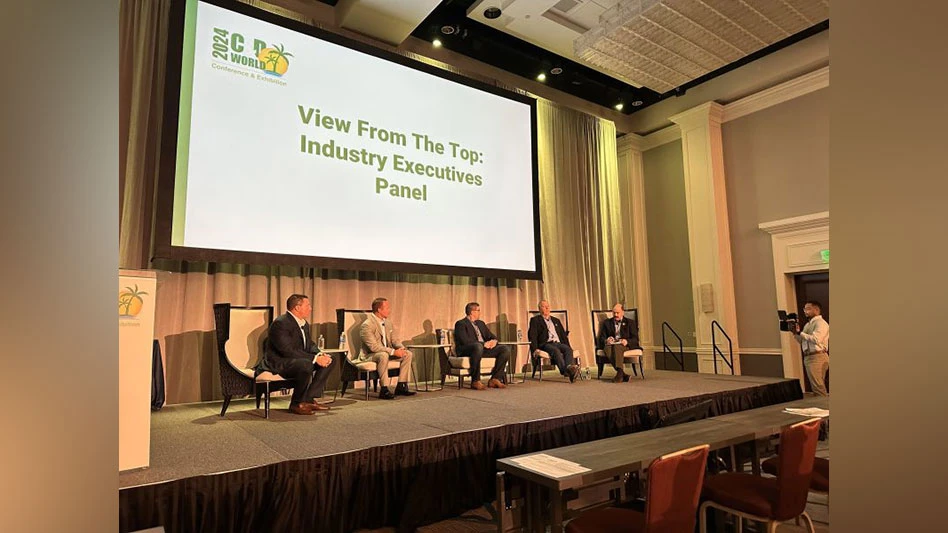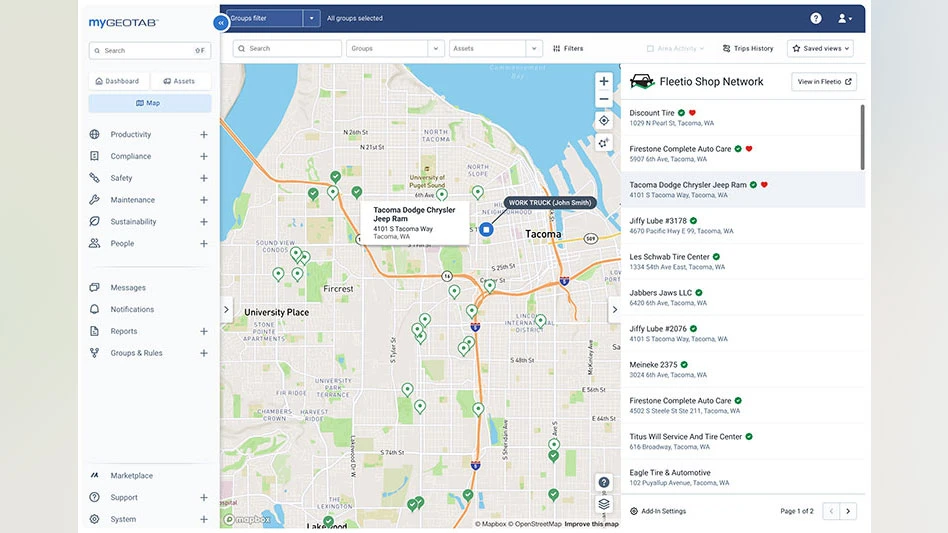
While artificial intelligence and autonomous technology have transformed operations in the single-stream recycling setting, according to industry leaders, there’s still tremendous untapped potential to integrate new technologies in construction and demolition (C&D) recycling facilities.
C&D recycling executives including Ben Harvey, president of Westborough, Massachusetts-based E.L. Harvey & Sons Inc./Waste Connections; Charles Lomangino, CEO and manager of Fort Myers, Florida-based Southwest Waste; Jason Haus, CEO of Shakopee, Minnesota-based Dem-Con Cos.; and Matt Spencer, CEO of Rosemont, Illinois-based LRS, shared insights on technology, C&D markets, market development, business development and more at C&D World 2024 Conference & Exhibition in a session titled View from the Top: Industry Executives Panel, moderated by Michael Hoffman, managing director at St. Louis-based Stifel Financial Corp.
While recycling technology is more innovative than it’s ever been, C&D recycling technology hasn’t yet caught up to the single-stream waste sector. Optical sorters are becoming more accurate on C&D lines and robots are starting to tackle picking, but neither are efficient enough to reduce labor needs, executives said.
“I believe in the robot aspect from the single-stream world,” Haus said. “I would like to see robots that are effectively picking in the C&D line, that we are able to go out and look at it as a tool that works.”
RELATED: C&D World 2024: Recyclers focus on refining end products
Automated processes have been proven to reduce the amount of labor—and produce more revenue—in single-stream facilities, Haus said, and the technology is getting close on the C&D side. The difference, executives explained, is the C&D material stream is bigger and bulkier than it is in a single-stream MSW site, which makes separation a major issue.
“The bigger and bulkier C&D material stream needs to be pre-processed to a size that makes sense with the technology,” Lomangino said. “On the A line, for us, I don’t see where you’re going to be able to get away from labor with the technology that’s currently out there. That’s not to say it can’t be done, it’s just not there.”
As new technology emerges, the most successful of operators will adapt. While many single-stream facilities have seen enhancements in processes, a majority of C&D plants have not yet been modernized, Harvey explained. Even when new plants are built, they don’t always incorporate new technologies.
“The old stuff is still working,” Harvey said. “If it ain't broke, don’t fix it.”
The need for modernization, though, is there.
“We’ve had our C&D storage system for going on 15 years,” Haus said. “And I would go out and have a look at what new equipment is available, and it’s not much different than what we have now. Do we want something different? Yes.”
As operators begin to adapt those processes, it’s essential to understand the economics of secondary markets—first they’ll need to identify inbound products and end markets, then upgrade equipment to match.
“For us there’s a couple of design factors. One is the end market,” Lomangino said. “What materials do we have markets for? We’re going to identify those materials we want to extract from the waste stream, and then we go design our facility.”
With the current technology, though, executives don’t see a path to reducing labor needs.
“The future that I see is trying to reduce the labor side. It’s a mirror image of what’s happened on the single-stream side, it’s just we’re not quite there yet with that technology,” Haus said.
In the meantime, labor shortages continue to provide challenges across the country. To help attract talent and improve retention, leading C&D recycling companies are focusing on improving company culture, providing workforce training and professional development initiatives for employees, and making an effort to recruit diverse candidates for manager and supervisor roles.
Executives remained optimistic about innovative equipment coming down the pipeline.
“I think before my career is done in this industry, we’ll see [that labor reduction],” Haus said, “but we’re just not quite there yet today.”
Latest from Construction & Demolition Recycling
- Radius to be acquired by Toyota subsidiary
- Pacific Steel selects Danieli as EAF equipment supplier
- Viably, Turmec partner on Ohio installation
- EPA plans to revisit numerous environmental, climate regulations
- Connecticut recycling facility looking to accept C&D faces local pushback
- Fornnax wins Green Innovation of the Year award
- ABC: Construction backlog inches lower, staffing levels expected to grow
- Former detention center in Cleveland set for demolition





